Differentiating Between Slips and Relapses
In the journey of addiction recovery, understanding the distinctions between a slip and a relapse is crucial for both individuals in recovery and their support networks. While both are setbacks, recognizing their differences can vastly influence recovery strategies and outcomes. This article delves into the definitions, psychological impacts, and coping strategies associated with slips and relapses to offer comprehensive guidance in supporting a sustainable recovery journey.
Defining Slips and Relapses
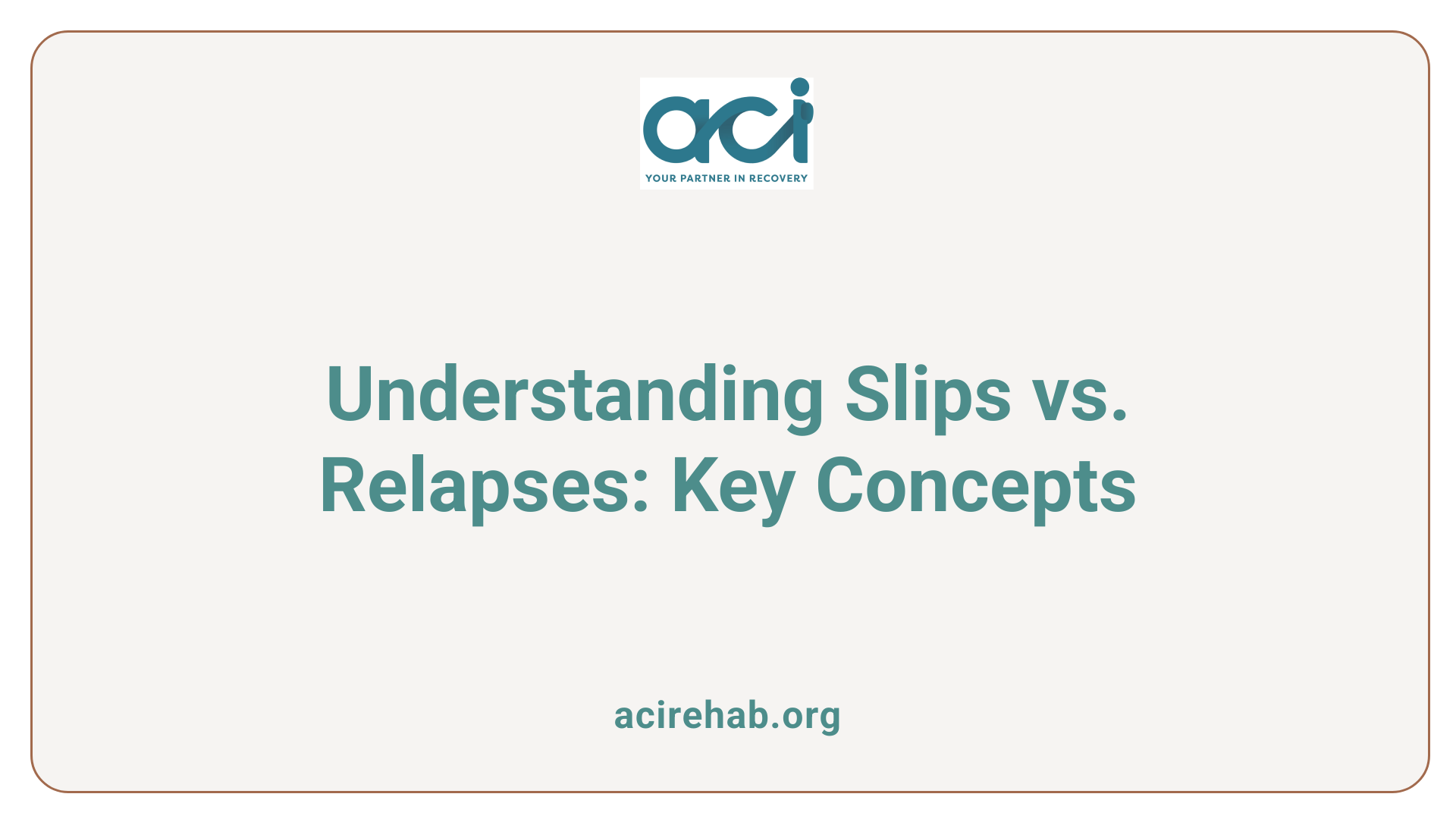
What is a slip versus a relapse in addiction recovery?
A slip, also known as a lapse, occurs when an individual experiences a brief and unplanned episode of substance use. This can be seen as a temporary setback rather than a complete failure of recovery. In contrast, a relapse is much more serious; it involves a sustained return to old patterns of behavior after a period of sobriety. A relapse typically progresses through multiple emotional, mental, and physical stages.
Differences between a slip and a relapse
Understanding the distinctions between slips and relapses can significantly impact one’s recovery journey.
Here’s a breakdown of their differences:
| Feature | Slip | Relapse |
|---|---|---|
| Nature of Use | Unplanned and isolated use | Regular and recurrent use |
| Duration | Brief and often quickly corrected | Extended period of substance use |
| Commitment to Recovery | Maintained commitment to recovery | Abandonment of recovery efforts |
| Emotional State | Informational guilt and willingness to improve | Lack of awareness of needs; emotional neglect |
| Stage of Recovery | Early recovery; common among newcomers | Typically happens when recovery is challenged |
| Response Required | Acknowledgment and reflection needed | Requires intensified treatment and support |
Recognizing these differences can empower individuals to navigate the challenges of their recovery and encourage a recommitment to their sobriety after any setbacks.
Exploring the Stages of Relapse
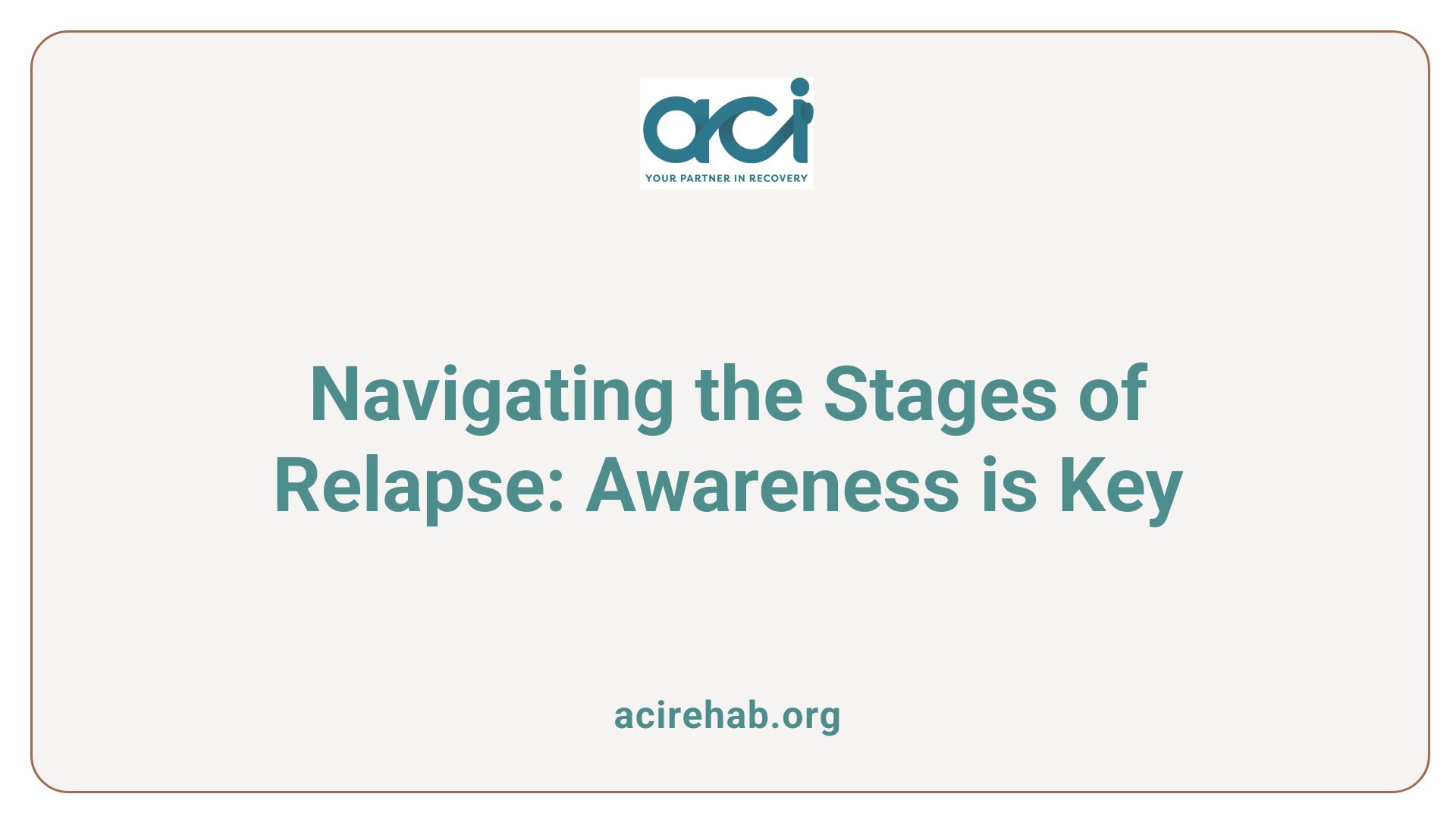
What are the stages of relapse?
Understanding the stages of relapse is crucial for anyone on the journey of recovery from substance use disorders. These stages offer important markers to identify the process of reverting to substance use after making progress in recovery.
-
Emotional Relapse: This initial stage does not involve using substances, but instead exhibits emotional struggles. Signs include:
- Increased isolation
- Mood swings or irritability
- Neglecting self-care
Individuals in this stage may feel unrest, but they aren’t yet actively considering substance use.
-
Mental Relapse: The second stage introduces an internal conflict, where cravings intensify, and nostalgia for past uses can surface. It may look like:
- Constantly thinking about past substance use
- Longing for the perceived rewards of past behavior
- Acknowledging the dangers but still entertaining thoughts of using
-
Physical Relapse: The final stage is the actual return to substance use. This stage carries significant risks and can lead to:
- Renewed use patterns
- Potential health risks, including overdose
- Strained personal relationships
Recognizing these stages is vital in establishing effective relapse prevention strategies. By understanding where one stands in the process, individuals can seek support and implement coping mechanisms to prevent further regression.
The Impact of Slips on Sobriety
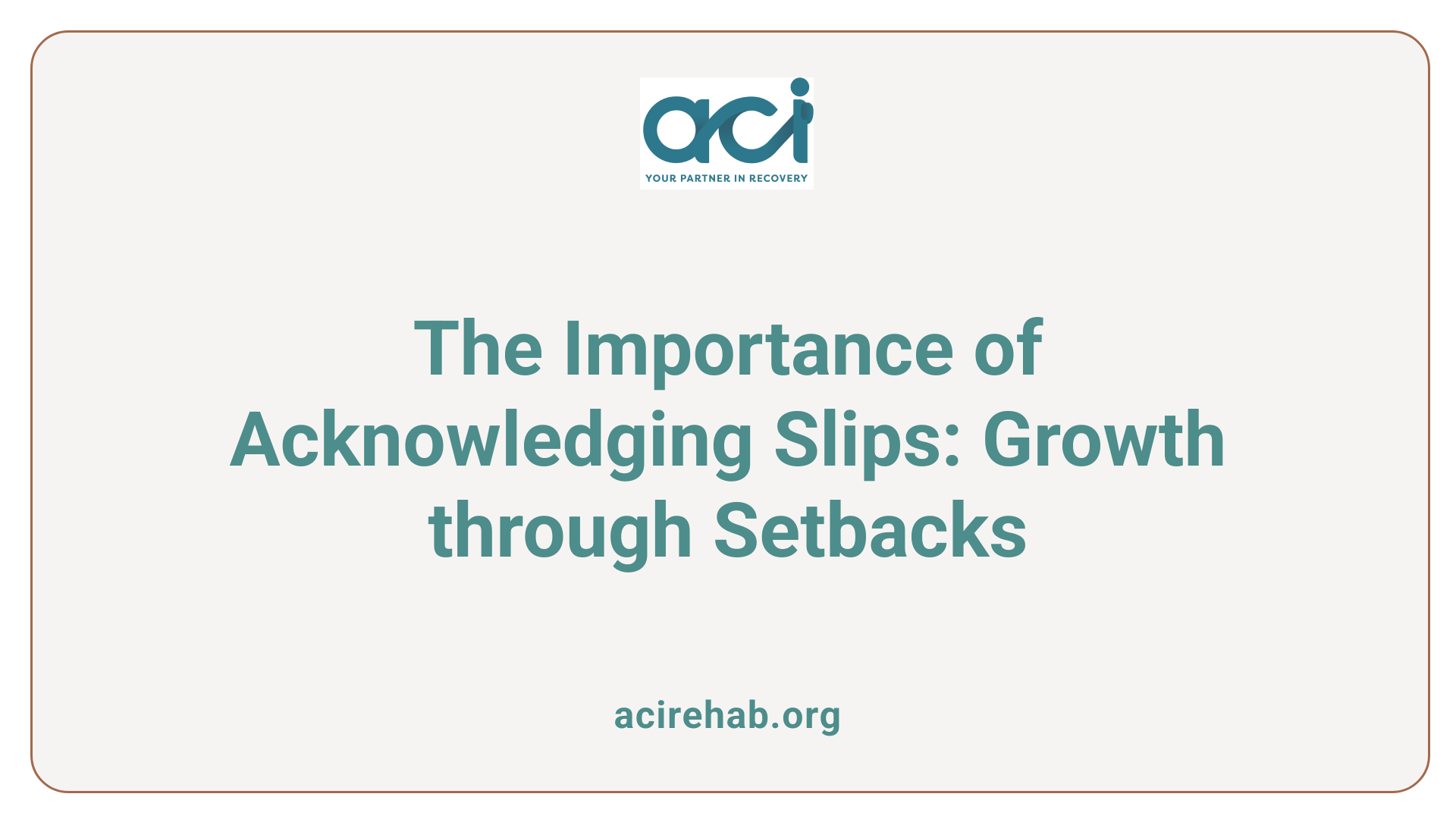
Does a slip reset sobriety?
No, a slip does not automatically reset sobriety. Defined as a single, unplanned episode of substance use, a slip differs significantly from a relapse, which entails abandoning recovery efforts altogether. After experiencing a slip, it’s crucial for individuals to acknowledge the incident and assess the factors that led to it. This reflection helps identify triggers and reinforces commitment to the recovery journey.
Many recovery programs recognize the educational value of a slip and allow individuals to continue counting their sober days. This perspective encourages a growth mindset, viewing slips as opportunities to learn and adjust strategies rather than as failures. Open communication with support networks can also alleviate feelings of guilt, reminding individuals of their commitment to recovery.
Handling slips in recovery
When a slip occurs, the best approach is to handle it constructively. This involves admitting the slip without shame and quickly reconnecting with recovery resources and support systems.
Here are effective steps to manage a slip:
- Acknowledge the slip: Recognizing the event as a minor setback can help prevent spiraling into despair.
- Reflect on triggers: Identify what led to the slip to develop strategies to prevent future occurrences.
- Seek support: Tap into recovery networks, whether friends, sponsors, or therapists, to gain encouragement and accountability.
Overall, experience with slips can enhance resilience and commitment to sobriety, paving the way for a more robust recovery journey.
Psychological and Emotional Differences
What psychological and emotional effects distinguish slips from relapses?
Slips and relapses bring distinct psychological and emotional responses, influenced by their severity and consequences in the recovery journey. A slip is often viewed as a minor setback, typically inciting feelings of guilt or shame, yet it usually serves as a brief pause rather than a return to old habits. Individuals may recognize their behavior quickly and harness it as a learning moment to bolster their recovery commitment.
In contrast, experiencing a relapse can lead to more profound emotional turmoil. This significant return to substance use correlates with feelings of failure, hopelessness, and increased vulnerability. A relapse often entails a conscious abandonment of the recovery plan, which may prompt individuals to withdraw from support systems, resulting in deeper emotional distress.
What strategies can help manage psychological and emotional impacts?
Recognizing personal triggers and identifying early warning signs related to slips can facilitate better management of recovery. Effective interventions, such as cognitive behavioral therapy (CBT), emphasize the importance of self-awareness and resilience. Individuals are encouraged to reflect on their experiences and develop coping strategies to address emotional challenges.
Here are some strategies that can aid in managing these psychological effects:
- Reflect on experiences: After a slip, take time to assess what triggered the behavior, which can provide insights for future avoidance.
- Seek support: Engaging with a support network or mental health professional can foster an environment of accountability and encouragement.
- Practice self-care: Implement relaxation techniques, such as mindfulness or yoga, to manage stress and emotional peaks.
- Set boundaries: Establish clear limits with people, places, and situations that may provoke the temptation to slip or relapse.
Through these management approaches, individuals can strengthen their resolve and view both slips and relapses as part of a continuous learning process, ultimately fostering long-term sobriety.
Strategies to Manage Slips and Relapses
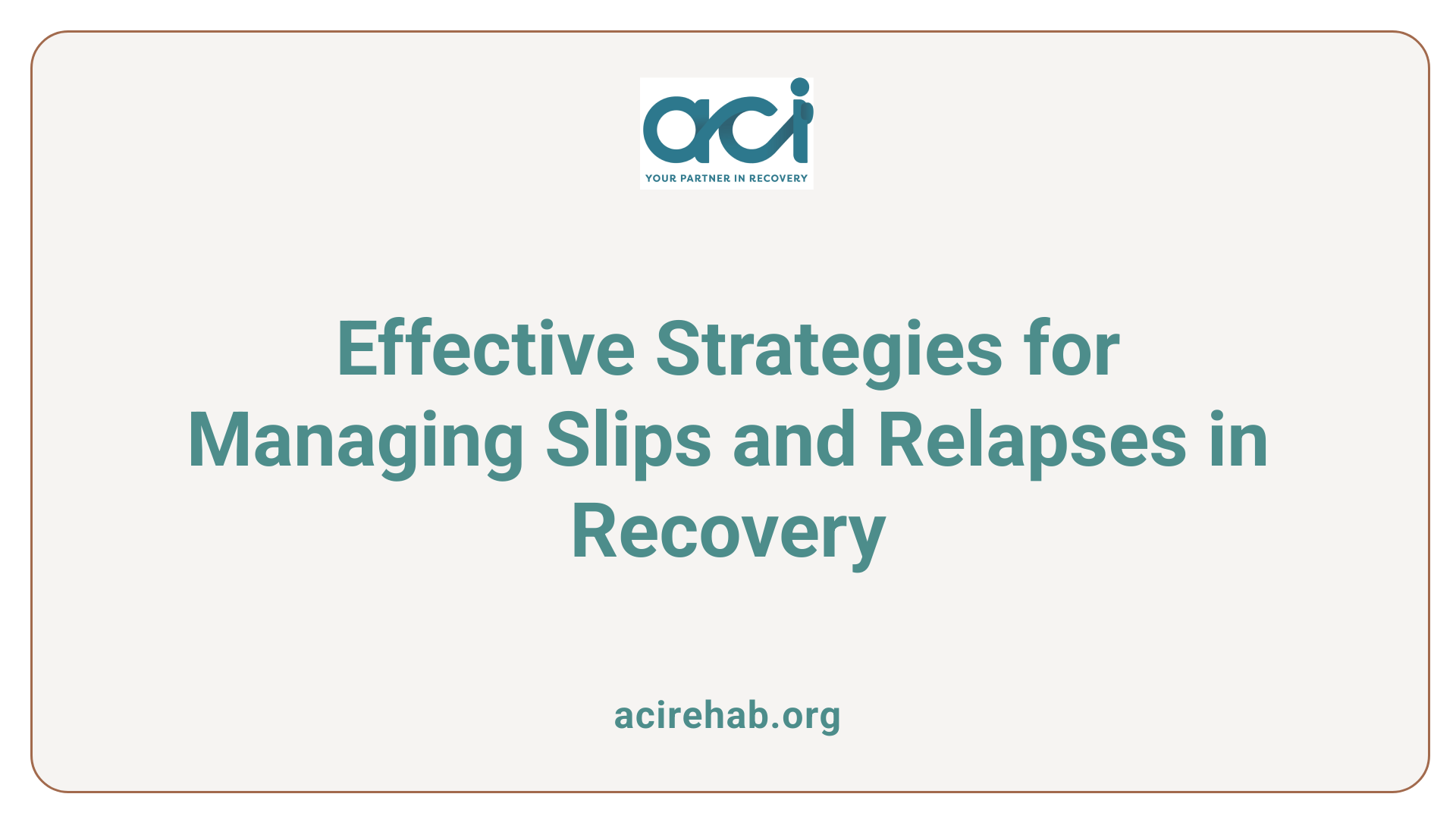
What are effective strategies for handling slips and relapses during recovery?
Handling slips and relapses effectively requires a proactive approach. Here are several strategies that individuals can employ:
-
Recognize Your Triggers
Understanding what circumstances, emotions, or environments lead to a slip can help in avoiding those situations or managing them better. -
Develop a Recovery Plan
Having a structured plan that outlines steps to take when a slip happens is crucial. This might include calling a therapist or attending a support group session. -
Seek Support
Engaging with support networks can be invaluable. Whether through professional therapy, peer groups, or trusted friends, sharing experiences can lead to increased motivation and accountability. -
Embrace a Learning Mindset
Instead of viewing a relapse as a failure, consider it an opportunity to learn. Reflect on what led to the situation and how to avoid it in the future. -
Practice Self-Compassion
Moving past feelings of shame and guilt is vital. Acknowledge that recovery is a journey with ups and downs, and maintain a focus on progress rather than perfection. -
Utilize the "One Day at a Time" Philosophy
This approach allows individuals to concentrate on present goals, reducing anxiety about long-term commitments and fostering a clearer path to sobriety.
Role of Support Systems
Support systems play a critical role in managing slips and relapses. This includes:
- Therapists and Counselors: Professional guidance helps individuals navigate the complexities of addiction and recovery, especially after a slip.
- Support Groups: Engaging with others who share similar experiences fosters a sense of community and mutual support.
- Understanding Friends and Family: Having a reliable emotional support network can encourage accountability and provide encouragement during tough times.
Employing these strategies can empower individuals to navigate their recovery journey more effectively, turning potential setbacks into strengths.
Identifying and Preventing Triggers
Common triggers for relapse
Understanding the triggers that can lead to relapse is critical in maintaining sobriety. Common triggers include:
- Stress: High-stress situations can overwhelm individuals, pushing them toward substance use as a coping mechanism.
- Social settings: Interacting with old friends or being in environments associated with substance use can evoke cravings.
- Negative emotions: Feelings like sadness, loneliness, or anxiety can lead to the temptation to use substances again.
- Lack of support: Absence of a strong support network can make individuals vulnerable to relapse.
Coping mechanisms
Developing effective coping strategies is essential for navigating these triggers. Here are some methods:
- Recognize and avoid triggers: Awareness of situations that lead to cravings helps individuals stay away from potential pitfalls.
- Develop healthy habits: Engaging in regular exercise, mindfulness practices, or hobbies can provide alternative outlets for stress.
- Support systems: Regularly attending support groups or talking with sponsors can significantly bolster an individual’s recovery journey.
- Mental health care: Consulting therapists or counselors can help manage emotional issues that may lead to relapse.
Utilizing these strategies can strengthen resilience and provide tools to handle challenging moments in recovery.
Supporting Someone in Recovery
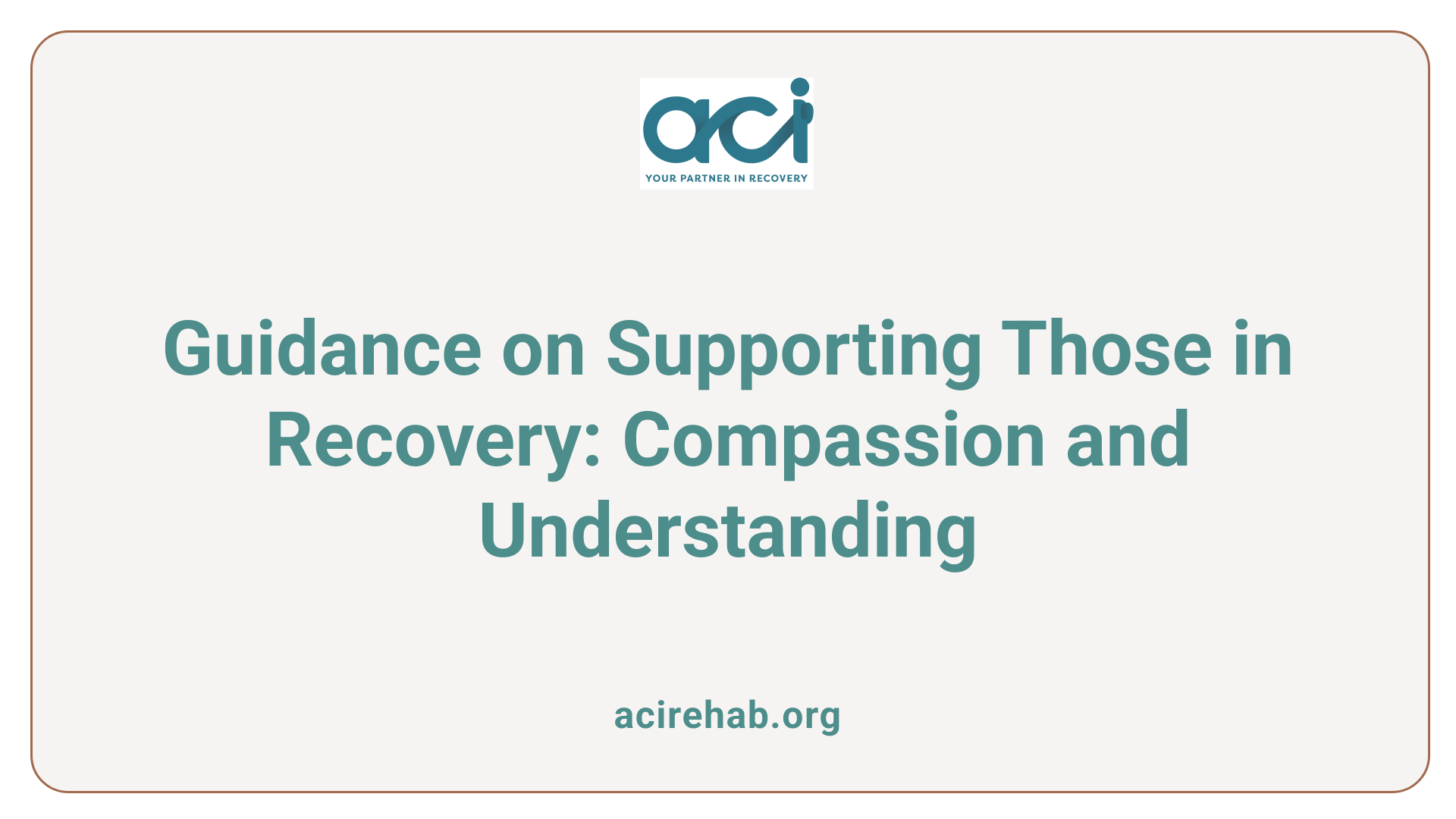
Guidance for Supporting Peers
Supporting someone in recovery involves being understanding and compassionate. It’s essential to listen without judgment, helping them express their feelings about their experiences with slips or relapses. Encourage them to reflect on their journey and emphasize that setbacks can be learning opportunities, not failures.
Building Resilience
Encouraging resilience in individuals is crucial for their recovery. Help them identify and recognize their triggers—situations or emotions that may lead to a slip or relapse. Engage them in relapse prevention strategies, such as attending support groups or therapy. Remind them that acknowledging a slip is a step toward regaining control.
Here’s a quick overview of supportive actions:
| Action | Description | Impact |
|---|---|---|
| Listen actively | Provide a safe space for expression | Builds trust |
| Encourage reflection | Help assess what led to the slip or relapse | Promotes insight |
| Suggest support groups | Facilitate connection with peers in recovery | Increases support |
| Recognize achievements | Celebrate progress, no matter how small | Boosts morale |
| Encourage self-care | Stress the importance of looking after oneself | Improves well-being |
Supporting someone through their recovery journey can significantly influence their ability to maintain long-term sobriety.
The Path Forward in Recovery
Understanding the distinctions between a slip and a relapse is an empowering tool for those navigating the challenging path of addiction recovery. By recognizing these differences and employing effective strategies to manage setbacks, individuals can enhance their resilience and reinforce their commitment to sustained sobriety. Recovery is not about avoiding setbacks entirely; it’s about learning from every experience, leveraging support systems, and embracing each day as an opportunity to grow stronger in sobriety. Through this process of continuous learning and adaptation, recovery can transform lives progressively and positively.
References
- Slip vs. Relapse – The Recovery Village
- What is the Difference Between a Slip and Relapse?
- Is a Slip the Same as a Relapse: What’s the Difference?
- What’s the Difference Between a Slip or Lapse and a Relapse?
- Does One Drink Mean Relapse? Understanding Relapse Vs Slip-Ups
- The Difference Between Slip & Relapse | LGBTQ+ Recovery MN
- Slip vs Relapse: What’s the Difference? – Pyramid Healthcare
- Slip vs. Relapse: What Is the Difference? – The Ridge Ohio

